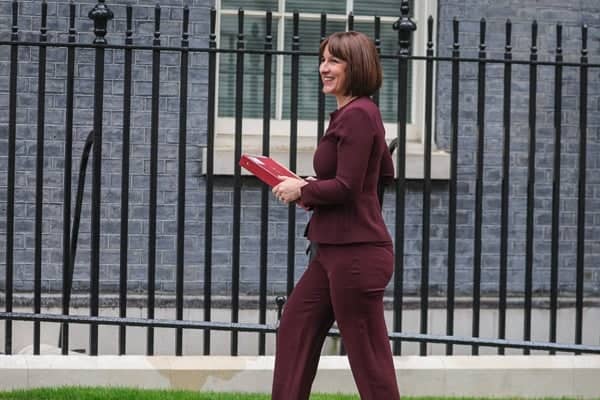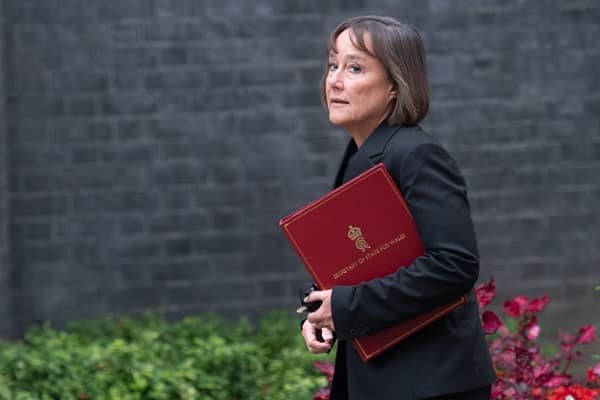Bussiness
A focus on growth, rates and debt ahead of the October Budget – London Business News | Londonlovesbusiness.com

At the end of October the Chancellor will deliver her first Budget. Already the markets, as well as the general public, are expecting a tough Budget.
This is a reflection of the messaging from the Government in recent weeks, the fiscal stance that has been inherited and the existing high level of UK debt.
At the end of July, the measure of public sector net debt (PSND) excluding the public sector banks was a very high 99.4% of GDP and the measure that excludes the Bank of England was 91.9% of GDP.
All of this will likely reinforce the pressure on the Chancellor to deliver a tough Budget, both to keep the markets onside as well as to ensure future fiscal solvency.
The OBR was not providing a forecast, but projections to show possible paths based on economic and policy assumptions. In their base case the OBR saw the ratio of debt to GDP rising to 274% of GDP in 50 years. But, in their higher growth scenario (with annual productivity growth of 2.5%), receipts and spending are both higher but net debt reaches 65%, and thus “209% lower than in the baseline.” Such numbers highlight the critical role that growth has in determining the outlook.
I recently provided evidence to the House of Lords and my comments were cited a number of times in their report including concern about falling into a future debt trap. I also stated:
“Our ratio of debt to GDP has been substantially higher, at around 250%, following the Napoleonic Wars and the Second World War. On both occasions it subsequently fell steadily. Thus, the ratio of debt to GDP must be considered in the context of the economic environment.
A high debt to GDP ratio, but an improving one in the right economic climate, is not a problem. But if the ratio is high and rising it’s a concern. The message is that a high ratio of debt to GDP is a necessary, but not sufficient condition to be worried about debt sustainability. There is usually something else, too, such as economic problems, political turmoil or a banking or financial crisis that makes the environment more difficult for corrective action to be taken.”
In the post-war period favourable dynamics allowed the ratio of debt to GDP to fall steadily until it reached around 20% of GDP in the mid to late 1980s. That, though, seems like an eternity ago.
Thankfully, the current context is a disinflationary one, with lower inflation allowing interest rates to fall, and with modest growth. Even so, the fiscal numbers offer little room for complacency. The fiscal plans the Chancellor has inherited were outlined in Jeremy Hunt’s March Budget, with PSND forecast to fall in coming years, as the economy recovered.
A key aspect to look at is what’s called the primary balance. This looks at the budget deficit after excluding interest rate payments on the debt. It is in a primary surplus if revenues exceed non-interest paying spending. The trouble is, these are few and far between, with 2000-01 being the last time the UK ran such a primary surplus. That was a legacy of Chancellor Brown sticking to the tough fiscal plans he had inherited in 1997, before he then boosted spending. However, in the March Budget the projection was for a primary surplus of 0.4% of GDP to be reached by 2026/27, rising to 1.1% in 2027/28 and 1.6% in 2028/29. This is clearly an ambitious – and probably unrealistic – plan.
As the Budget Redbook stated, “The primary deficit reduces over the forecast period, withdrawing support to the economy gradually… This gradual withdrawal of fiscal support for demand is helping the MPC to bring inflation sustainably back to target.” Thus, the March Budget was accepting that the fiscal outlook would not help demand and, while the impact on monetary policy was not cited, it would in turn add to lower inflation and to pressure for lower interest rates, too.
It is important that a focus on debt and debt sustainability is not misinterpreted as an argument against using fiscal policy for economic management. There have also been calls over the last week to prioritise public investment. That makes sense in the right circumstances, as I have argued before, including in a column in The Times as long ago as 1991!
In the past I have set out ten fiscal principles, which I referenced in my testimony to the House of Lords committee. One of which was to take advantage of low borrowing rates to fund the deficit with debt of as long a maturity as possible. Such a principle would have made eminent sense in recent years, especially in 2012, and more recently in the pandemic. By not embracing locking-into borrowing for very long-term maturities (thus avoiding future refinancing risk), at very low long-term yields to finance necessary infrastructure is clearly a missed opportunity to prioritise growth.
At the time I publicly opposed the austerity in the early 2010s, which had no long-term strategic thought behind it and was arbitrary, hitting hard non-ringfenced departments. Moreover, it was unnecessary given the borrowing environment, with the outcome making the economic situation worse. Yet with debt far higher now, and the economic outlook uncertain, we should recognise the constraints on rising public expenditure as well as on pushing taxation ever higher.
In the post-war period when growth was strong and the UK was experiencing financial repression (with low interest rates), the ratio of debt to GDP was able to fall even though the UK was often running budget deficits. In those days, because growth was high and interest rates low, debt would have stabilised with a high deficit: the debt stabilising primary deficit (the difference between the fiscal deficit and the interest payment of the previous year).
Now the situation is very different, as growth is modest and interest rates, while falling, are relatively high. In November 2020, for instance, the OBR stated that, “At our estimate of long-run interest and growth rates, a primary surplus of 0.9 per cent of GDP would be required to stabilise debt.”
One may well be tempted to ask how much notice should be taken of these projections. After all, the margin of error on forecasts just six months or one year ahead can be wide of the mark by a considerable degree. Nonetheless, these long-term projections do influence the policy debate as they draw attention to the constraints.
In many respects this highlights both the difficult current debt position and reinforces the importance of the government’s focus on a pro-growth economic strategy. The question, of course, is whether their policies will deliver that. For, it is not just the level of debt and the deficit, it’s where the money is spent and its future trajectory, with the future relationship between growth and interest rates, that is key.








